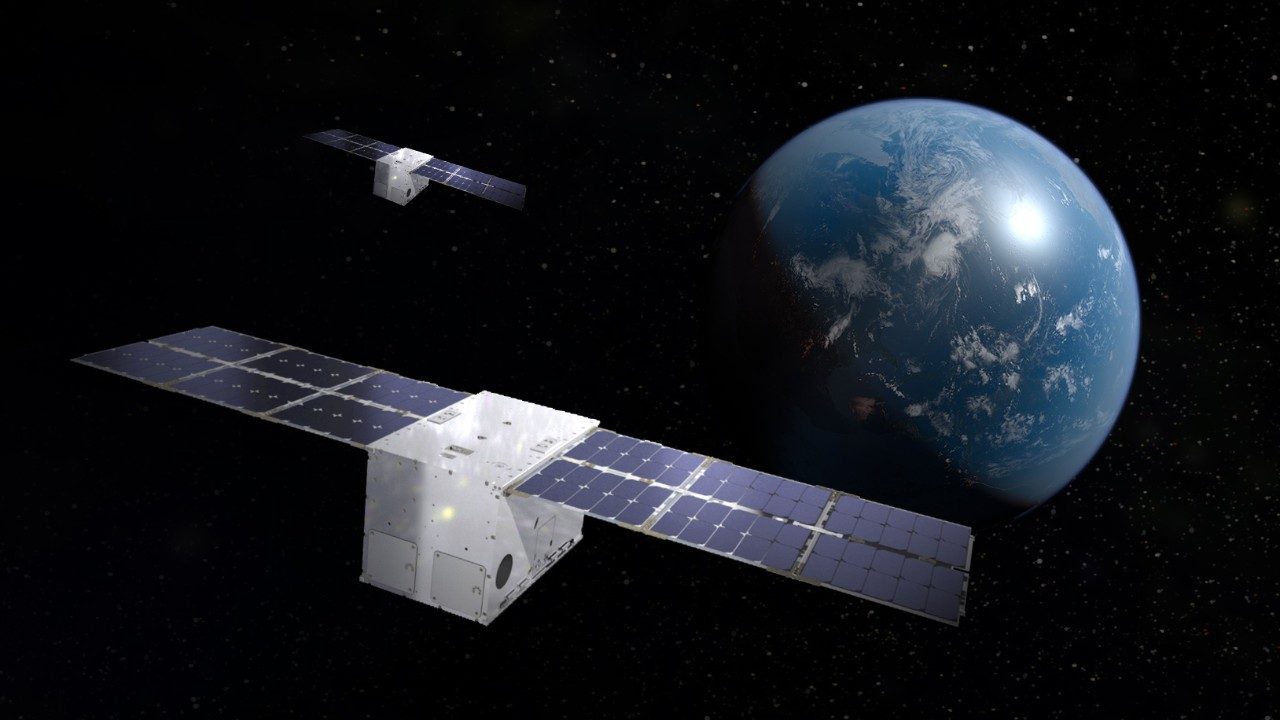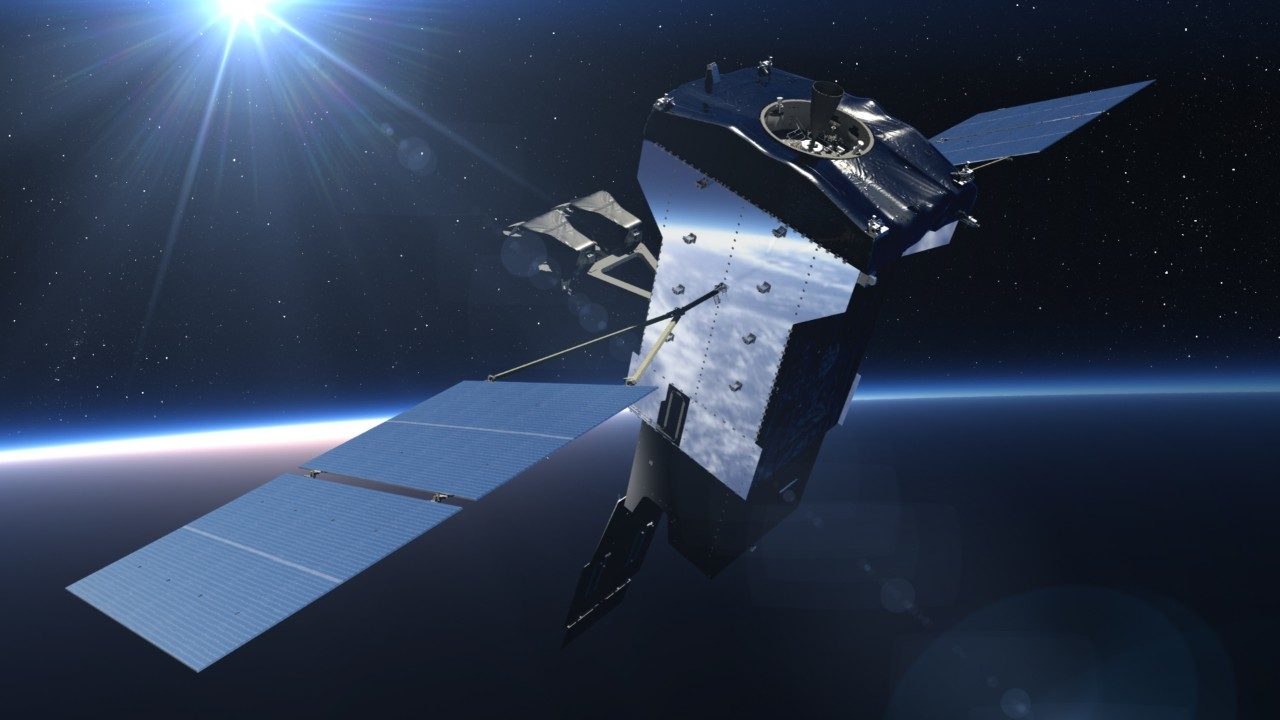Connected, Protected: Regaining the High Ground with 21st Century Security
Lockheed Martin’s Senior Director of Military Space Mission Strategy Eric Brown believes the future of space won’t be entirely peaceful.
“We’re going to expect conflict on orbit in the same way we expect conflict on the seas,” Eric predicts. “For all the good intentions that people have about maintaining a peaceful existence in space, we’ll also in the near term see an increased arms race in space.”
The past two decades have provided a preview of the contests to come.
“Our near-peer adversaries like China and Russia and even some others recognize what an advantage space gives us in terms of communications and targeting, and they have sought to eat into that advantage,” Eric says. From spoofing or jamming satellite communications to testing anti-satellite weapons, “they’re trying to remove our ability to operate freely in space while fielding their own space capabilities.”
Eric and his team are responsible for identifying and implementing the mission needs and architectural requirements that the U.S. Space Force and other military space customers need to protect against that unprecedented level of threat, now and in the future.
Here’s a look at the military space capabilities Lockheed Martin is creating to connect tomorrow's battlespace and maximize space capabilities for the 21st century, whatever the domain.
Distributed Architecture
Winning the military space race of the future requires a distributed architecture. Satellite constellations in low-Earth orbit (LEO) alone don’t provide the architectural resilience needed for the “holistic” approach that Eric envisions. The U.S. Space Force has said a distributed architecture is needed, especially as adversaries develop and test anti-satellite weapons.
Diversifying and distributing mission capabilities across orbits and assets will contribute to resilience—if one element is threatened or disabled, others can fill the gap.
“We're going to see the ‘high ground’ pushing further and further out,” Eric says. “Whereas today we're talking about LEO, medium Earth orbit (MEO), and geosynchronous orbits (GEO), in the future we're going to increasingly be talking about the benefits of having assets in orbits that are higher up.”
Architectures alone aren’t sufficient to drive resilience, though. Eric remarks, “People have begun to look for ‘easy button’ panaceas in the form of architectures like proliferated LEO or other orbits, but absent the ability to defend themselves, these satellites are just clay pigeons. Our adversaries will be able to remove a hundred clay pigeons as easily as one.”
Space-Based Connectivity
As the pace of warfare increases, gone are the days of the “headquarters” approach, where information is relayed to decision makers and then sent back to battalions or brigades in the field. ”We need direct connectivity into the platforms,” Eric says. “There’s a need for strategic applications of space for communication, navigation and other capabilities.”
Those space assets play an essential role in Joint All Domain Operations (JADO) and Joint All Domain Command and Control (JADC2), linking land, sea, air, cyber and space systems and assets. “That’s really where space comes into play,” he says. “It’s providing the eyes, the ears, the full understanding of what the battlespace looks like that takes it to another level that is part of JADC2.”
Achieving that level of connectivity requires a mesh network that creates a “confluence” of all the systems available to military decision makers. “That could mean missile warning system cueing to a missile tracking system that cues to some kind of fire control capability and directly interfaces with the weapon systems that are required to intercept advanced threats,” Eric says.
One way Lockheed Martin is building that layered approach is with its work on the Space Transport Layer’s Tranche 0, a Space Development Agency (SDA) project that will demonstrate a mesh network of 20 small satellites. The network is designed to link terrestrial domains to space sensors, essential to JADO and the ability to stay ahead of threats. Eventually, constellations like the Transport Layer could fit into a larger “network of networks.”
Lockheed Martin is taking that same approach with 5G.Mil®. The high speed, resilient network of networks leverages the unique connectivity space provides among domains. By sharing data from all domains, including space, commanders at the edge can predict, disrupt and disable threats.
The creation of this kind of connectivity across domain may directly enable future weapons systems to perform varied missions including missile defense. Lockheed Martin is designing a Next Generation Interceptor (NGI) for the Missile Defense Agency (MDA). NGI’s mission is to protect the homeland against missile threats with a modern, never-fail system that features multiple kill vehicle technology, digital engineering, DevSecOps and modular architectures. Eric pointed out that “due to Lockheed Martin’s unique role across the missile warning and defense mission ‘from indications through intercept,’ the company is able to connect the kill chain and provide data directly from space and other assets (like AEGIS radar systems) to the NGI effectors.”
On-Orbit Solutions
The satellite is not just a commodity. “In the contested environment of space, the satellite is a sophisticated capability and platform,” Eric says. To ensure mission success as well as longevity, flexibility and value, Lockheed Martin is developing a variety of on-orbit satellite servicing capabilities.
“On-orbit enhancement is something that Lockheed Martin excels at, in a way that we haven’t seen elsewhere in the industry,” Eric notes. “We’ve developed technologies that we are demonstrating today, and we’re looking to onboard them in the next few years to government programs. Our government partners are excited about the opportunities.”
These new, disruptive capabilities include SmartSat™ technology that allows software on board a satellite to be updated on the fly. ASPIN is a new interface that can add new hardware to a spacecraft after launch. An ASPIN docking port is intended as a standard feature of the evolved Lockheed Martin LM2100 combat bus, which will onramp to GPS IIIF Space Vehicle 13 and subsequent vehicles.

In late 2021, the Lockheed Martin In-space Upgrade Satellite System (LINUSS) launched to demonstrate how small CubeSats can dock onto space vehicles augmenting mission and auxiliary capabilities. In addition, Lockheed Martin has invested in Orbit Fab’s Gas Stations in Space™ refueling technology and is exploring ways that this technology could integrate with the ASPIN docking port.
“Those capabilities change the entire paradigm for considering satellite capabilities and technologies,” Eric says.
Artificial Intelligence
In the future, the faster pace means space vehicles will need to operate more autonomously for faster communications and decision-making. “To do that we’ve started bringing in artificial intelligence and machine learning,” Eric says. “There’s a renewed emphasis on having a greater degree of security capability and analysis.”
In this future battlespace, AI will play a key role using algorithms that can be trained to recognize standard system operations and alert operators to differences, leading to reduced response times to potential attacks. One of those ways is through wargames.
.jpg.pc-adaptive.full.medium.jpg)
Lockheed Martin has invested in multiple simulation capabilities, including an app-based wargame intended to train artificial intelligence algorithms. Those simulation and gaming approaches can establish a strong analytical foundation to define the architectures and capabilities needed to deter or be successful in a war in space. The games evaluate adversaries’ potential approaches in a range of scenarios that might include short-notice attacks and cyber and electronic attacks.
“The modeling and the analysis allows for a data-backed approach to our assessments,” Eric says.
Lockheed Martin’s AI and digital capabilities extend beyond wargaming and simulations. Digital twin technologies aid space vehicle design, help model architectural choices and can even simulate courses of action. Tools such as BEASTTM, COMPASSTM, HORIZONTM and iSpaceTM introduce new layers of capability for operating space capabilities, processing data and performing space domain awareness functions.
Power of Partnership
Some of the most powerful, cost-effective ways of creating new capabilities in military space will come from here on Earth and the partnerships Lockheed Martin has formed with both established companies and space industry startups.
Lockheed Martin is building partnerships with new space companies through programs like Lockheed Martin Innovation Partners, which Eric leads.
“Lockheed Martin is a disrupter,” Eric says. “We actively partner with these small businesses in a multitude of ways to accelerate technology. Lockheed Martin Innovation Partners makes it easier to bring non-traditional companies and their tech onto programs of record.”
Lockheed Martin’s partnerships aren’t limited to industry. " We see ourselves as partners on the most challenging missions that US Government faces, including expanding those missions to include our allies," Eric says. "In the face of our adversaries’ capabilities, it’s critical that the US and all its allies work closely across governments and industry to develop future coalition architectures and capabilities. Only then can we preserve the global security that’s existed since the end of the Cold War.”
To hear more from Eric Brown about the future of space and the space economy, follow him on LinkedIn.
For much more about how Lockheed Martin is developing a bold new future in space, tune in to Lockheed Martin's "Space Makers" podcast, available everywhere you listen to podcasts.







